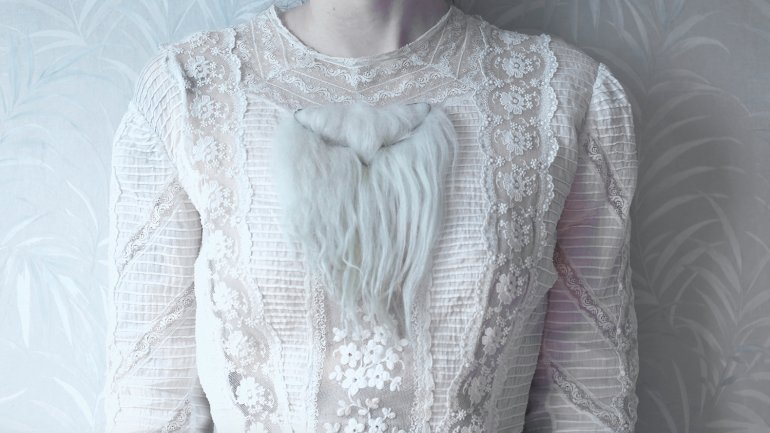Luci Jockel
Luci Jockel
What do animal remains and Victorian mourning jewelry have in common? You might say not much. But there’s a clear connection for Luci Jockel, who earned an MFA in jewelry and metalsmithing from Rhode Island School of Design in 2016. Jockel, 25, doesn’t use the woven strands of human hair or jet gemstones typically associated with mourning jewelry; she prefers Icelandic sheep wool, deer bone, and beeswax. Still, like mourning jewelry, Jockel’s delicate pieces express deeply felt grief and commemorate lives irrevocably lost.
Jockel’s reverence for creatures living and dead is apparent in her respectful treatment of the artifacts she handles. A collector of bones since childhood, Jockel used to hike through forests near her parents’ house in western Pennsylvania, picking up every animal remnant she could find. “If it was small enough to fit in my pocket, I would carry it home,” she recalls. She ended up with a big collection.
And she never stopped. Rows of squirrel and groundhog skulls are displayed in her Indiana, Pennsylvania, studio, waiting to be fashioned into necklaces and brooches. These days she sources her materials directly from hunters, flea markets, and taxidermists, but she won’t turn down the occasional road-kill squirrel. “When my friends bring me a dead animal, pelt and all, I bury it in my parents’ backyard and mark the place so I can find it again later,” she says.
If the underground decomposition takes longer than she’d like, Jockel speeds up the process with dermestid beetles, used by taxidermists and hunters to eat away the flesh of dead animals. A few days after the beetles go to work, all that’s left are bare bones. Jockel finishes the process by soaking them in hydrogen peroxide for a day or two and then removes any residue with hot water and dish soap. “If you thoroughly clean and degrease bones, they will not deteriorate,” she explains. “They also won’t stink.”
Jockel’s smallest work to date, Bee Wing Lace (2014), is a fragile 1-by-1-inch veil composed entirely of bee wings and rubber cement. The idea came to her after she researched colony collapse disorder, a disease affecting honeybees that scientists attribute to the loss of habitat, invasive mites, and pesticide poisoning. “I had to pluck wings from bees for this project, which was very difficult for me. I would never harm an animal, and I had to constantly remind myself that the bees were already dead so that I could focus on what the work actually means.” Jockel needed many hours to painstakingly remove the wings and reassemble them at her bench.
She would like to create a 5-by-5-foot veil one day. “It would probably take me a year to make, but imagine how striking it would be,” she muses. “Displaying wings from thousands of dead bees would send a strong message about how human behavior impacts animals and our shared environment.”
Death Becomes Her
Beauty plus: Jockel considers all of her objects beautiful, but she readily admits some people might find them off-putting. “I try to strike a balance,” she says. “You can easily look past a beautiful work, but if there is also something [in it] that’s kind of disturbing, it will hold your attention a little longer as you try to understand why this piece makes you feel the way it does.”
Roommate repellent: Stench is an inevitable by-product of Jockel’s work, which she discovered working with honeybees. She had persuaded a beekeeper to give her bees that had died from natural causes. When she got them, their bodies were still too moist and full of pollen to work on, so Jockel laid them out to dry in her dorm room. “Without proper ventilation, the smell was intense,” Jockel recalls. “My roommate rebelled, and I had to move the bees over to my parents’ house.”




